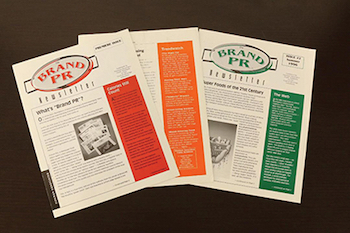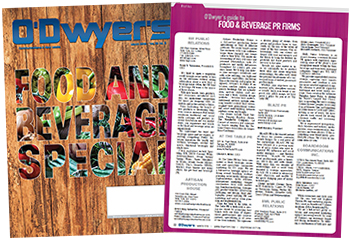 Lorna Bush |
Flashback to the natural foods heyday of the 1990s and it might seem that the values of conscious food consumers haven’t changed much over the last 30 years. Trusted local, high quality ingredients. Organic choices. A “natural” approach to real foods as opposed to complicated, unknown chemicals. Plant-based protein sources for a mix of nutritional preferences. Artisanal emphasis. Partnerships between local food producers and the community. Family-friendly products brought to market by trusted brands that understood responsible food practices and production.
From a food producer’s perspective, the business challenges of meeting consumer and retailers’ stringent demands also appear similar: ensuring product safety and integrity, reducing the risk of food recalls, navigating labeling concerns, procuring trusted suppliers for quality ingredients and meeting high standards for animal welfare and environmental sustainability.
|
|
These shared tenets for wholesome living and responsible eating seem awfully similar despite the time difference.
So, what’s changed?
Instant access
A far cry from the “convenience” foods of the past — fewer healthy options that usually sacrificed quality for a quick meal fix — today’s instant access means I can buy organic beef bone broth, fresh salmon and organic micro-greens for dinner tonight on the same app I use to buy replacement chargers for my iPhone and even a bulk bag of dog food if I’m in a crunch. My groceries, likely delivered by an Amazon or Walmart van or even a driverless delivery vehicle, can also be accompanied by a bottle of Quintessa that years ago would’ve required a trip to a local wine merchant. Instant access to high quality foods are changing the way consumers eat and changing the way the food and beverage industry is evolving to embrace the new “fast food.” It’s been estimated that the number of U.S. adults who order groceries at least once a month with an app will increase by nearly 50 percent this year compared to 2018.
In-store incentives
How can brick and mortar stores lure customers back into their aisles? To encourage and incentivize in-store purchases, food producers are employing QR codes and scan-and-save options to give consumers instant access to deals that make shopping more interactive. Scannable codes give consumers access to a mobile world of coupons, recipes and traceable sourcing details that increase brand engagement and reward entry.
Food safety traceability
 Have consumer food priorities changed? Not much, according to these 1990s headlines from Fineman’s Brand PR newsletter. |
We read headlines nearly each day about new food recalls. Two separate chicken nugget recalls right before the Super Bowl led to concerns about the category as a whole and garnered headline news coverage from CNN and the “Today Show.” According to USDA reports, the agency in 2005 handled 53 food recalls, with just one related to extraneous/foreign materials and nine related to undeclared allergens. In 2018, the agency oversaw 125 food recalls, with 23 related to extraneous materials and 26 related to undeclared allergens. Is the food supply less safe? Hardly. Technical innovations, like high sensitivity imaging devices, along with increased training, shared resources and knowledge among industry partners, have significantly increased the ability of producers to detect potential risks before products ever leave the production line.
For those producers who do face recalls? The advent of blockchain technology and increased use of traceable sourcing systems makes it far easier to track down the root cause of potential product issues and supply challenges. Data-based solutions from the farm, transport provider or retailer system allow food producers and regulators to quickly trace risks and ensure that products are effectively removed from the marketplace.
Transparency watch
Who’s literally watching the farm? Fresh foods producers must prioritize the integrity of the foods they raise for consumption. This includes the land on which they grow vegetables or raise livestock. Even with the popularlity of farm-to-table and Slow Food movements, few U.S. consumers have access to the farms where the food they buy is grown. In large part, this limited access is vital for sound biosecurity practices that protect the food supply. Thanks to the proactive marketing and community engagement of many producers who choose to provide real time footage of farms and food production, consumers have more ways to see agriculture in action. Also, now, more than ever, activists and producers alike are employing drone and AI technology to monitor property and livestock practices. In a visual duel of he-said, she-said, livestreaming production and practices simultaneously protect and target food brands online and with media.
Luxe knows no bounds
Lack of access for in-demand food and beverage items used to signal luxury: the coveted cult whiskey, the limited-edition vintage, the in-the-know butcher or the farmer’s market friend that would save a bag of squash blossoms or ramps in peak season if you knew when to go. The instant access of today’s consumer grocery e-marketplace has increased our ability to find coveted foodie finds on demand, online or in app. Greater access and increased competition for these items has also allowed us the ability to shop smarter and perhaps more frugally (service fee be darned). But will this instant access replace the emotional connection we crave with the brands we favor and the conscientious people behind them?
Some things never change. The foundation of good public relations remains rooted in consciousness, transparency and brand trust. Voice activated or not, these are the basics that today’s consumers and customers expect now (and preferably Prime.)
***
Lorna Bush is Senior Vice President at Fineman PR in San Francisco.



 What the biggest meal of the day can teach us about serving up effective nutrition communications campaigns.
What the biggest meal of the day can teach us about serving up effective nutrition communications campaigns. Tips to refine and amplify your CPG brand strategy to win in 2024 and beyond.
Tips to refine and amplify your CPG brand strategy to win in 2024 and beyond. Strategic communications strategies for success in the growing “food is medicine” movement.
Strategic communications strategies for success in the growing “food is medicine” movement. How brands can authentically communicate sustainability issues and create a brand experience that’s compatible with consumers’ values.
How brands can authentically communicate sustainability issues and create a brand experience that’s compatible with consumers’ values. Communicating the effects that climate change and a growing world population have on our food system—and why change is needed.
Communicating the effects that climate change and a growing world population have on our food system—and why change is needed.


 Have a comment? Send it to
Have a comment? Send it to 
No comments have been submitted for this story yet.